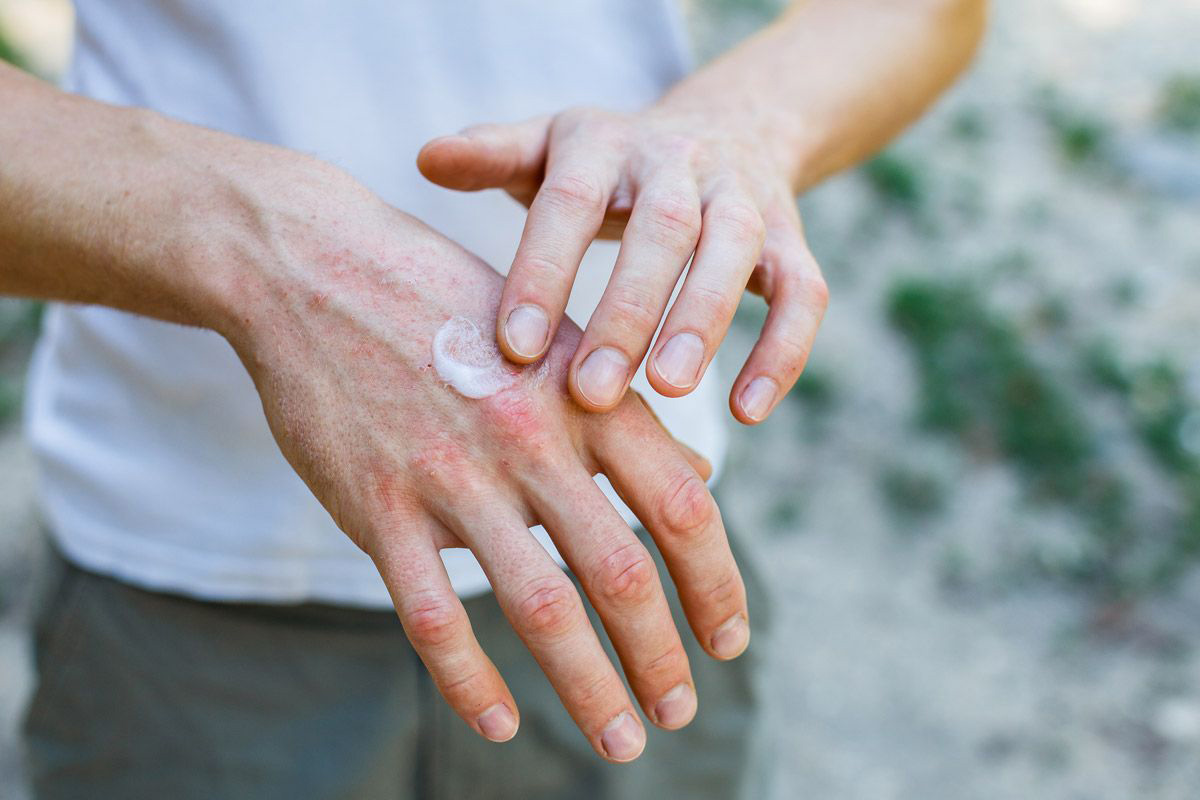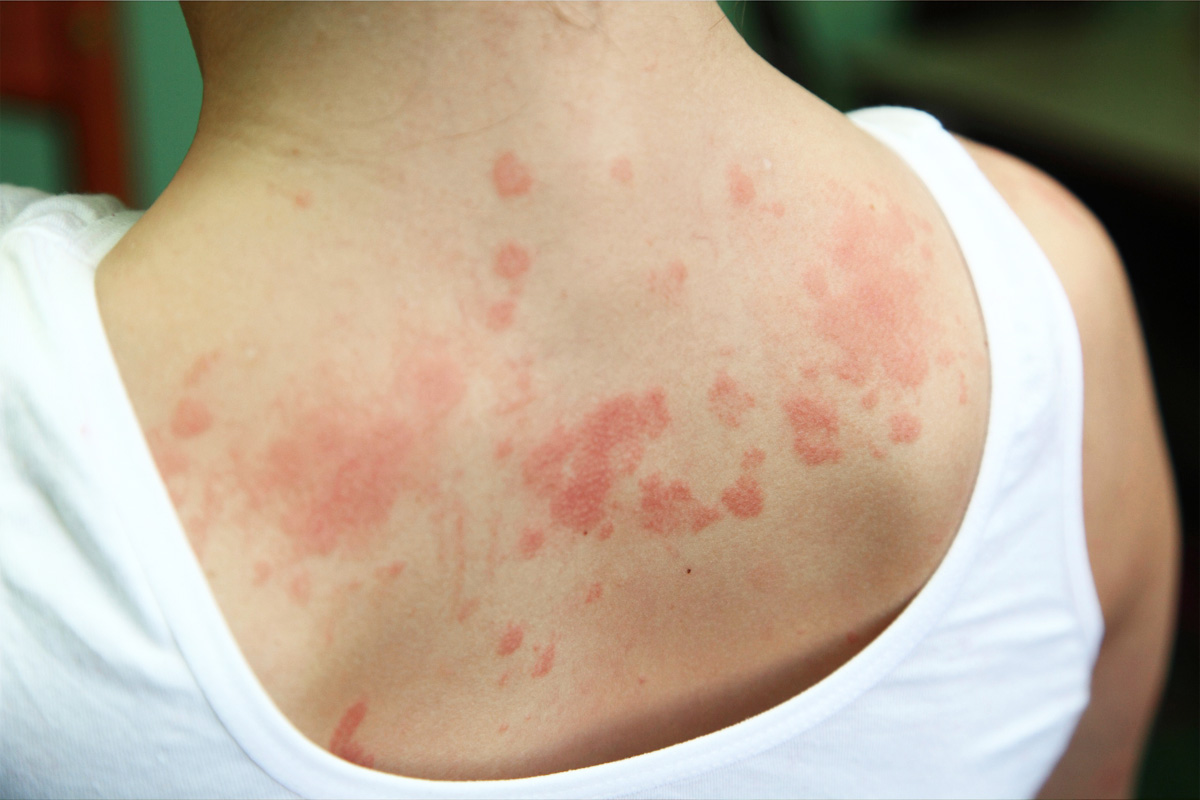Learn When a Rash May Require Immediate Attention
Most skin rashes are harmless but uncomfortable due to itchiness and unsightliness. As a result, most can be treated at home with over-the-counter creams and lotions, such as nearly all insect bites, poison ivy and poison oak, and mild cases of eczema. However, some rashes can be indicative of a serious or even life-threatening condition when accompanied by other symptoms. So, it’s important to know the difference.
Many rashes cannot be accurately identified without medical training, since the description of a rash, such as scaly, blotchy, or itchy, can apply to a multitude of conditions. Some rashes stay confined to one area of your body while others spread out all over depending on the cause. Some of the many possible causes of rashes that must be diagnosed and treated by a doctor include prescription drug induced rashes, Lyme disease, lupus, scabies, cellulitis, chicken pox, measles, psoriasis, and sometimes cancer, as well as some rare, life-threatening diseases. Even beauty products can lead to rashes that may require a professional to diagnose and treat.
If any of the following signs appear with a rash, it will require an immediate visit with a qualified physician: pain, fever, blisters, bruises around the rash, the sudden onset of a rash that spreads quickly over your body, a circular rash, or changes to your skin's color or texture, or if you experience trouble breathing.
No matter what the cause, scratching a rash may bring temporary relief, but breaking the skin in the process runs the risk of infection. If the rash oozes pus (yellow or green fluid), becomes swollen, crusty, develops blisters or discolors the skin, is warm to the touch, or develops a red streak coming from the rash, it is probably infected, requiring immediate medical attention. It is a good idea to take a picture of the rash for your doctor as rashes may change from hour to hour, progressing or fading or even changing in appearance.

Possible indications of a rash that require immediate attention:
- A rash that spreads all over the body may indicate an allergic reaction or an infection.
- A painful rash accompanied by a fever may be a sign of herpes infection, measles, mononucleosis and scarlet fever.
- The sudden onset of a rash or hives that spreads rapidly all over the body may indicate anaphylaxis, which is a severe allergic reaction that can be fatal if left untreated.
- A blistering rash may be a sign of an autoimmune disorder or a severe drug reaction.
- The sudden spread of a purplish rash over the body may be a sign of infection by a deadly pathogen, inflammation of the blood vessels (vasculitis) or an allergic reaction to a prescription drug.
- A (purpuric) rash that appears as large red or purple spots under the skin may be due to the failure of the body’s blood-clotting system.
- A rash that is accompanied by skin discoloration or any changes to the skin, may indicate liver disease (yellowing of skin) or diabetes (darkening of the skin).
- Bruising or swelling around a rash may be a sign of a poisonous insect bite. It could cut off the blood flow to the affected area and requires emergency medical attention.
- Purple spots on hands and feet can be a sign of a serious bacterial infection of the heart.
Let your medical professional know if you have started using any new cosmetics, skin creams, or medications, have traveled out of the country, or have had visitors from another country or geographic area, have gone camping or have visited places outside your normal environment. Have the names of any new products ready and the date you started using or ingesting them. The more information you can provide, the easier it will be for a physician to diagnose the reason for your rash.
The following more serious, rare, and potentially life-threatening diseases are known best for the type of rash that develops. All are curable if diagnosed and treated early.
- Meningococcemia is an infectious disease that starts with headache, nausea, vomiting, muscle and joint pain before a rash appears. The characteristic sign of meningococcemia is a rash that does not fade under pressure. The rash can appear anywhere on the body due to damaged blood vessels allowing blood to “leak” into the skin.
- Rocky mountain spotted fever is caused by Rickettsia, which is transmitted to humans by a tick bite. Symptoms include fever, chills, headache, cough, muscle pain, general malaise and a rash. The rash only develops two to four days after fever begins. The appearance of the rash can vary widely; some rashes look like red splotches and some look like pinpoint dots. While almost all patients develop a rash, it does not appear early in illness, making it difficult to diagnose.
- Necrotizing fasciitis is a bacterial infection primarily affecting the legs and penetrates deeper tissues. It is commonly caused by staph or strep. Symptoms include fever and chills before a skin rash appears.
- Pemphigus Vulgaris (PV) is an autoimmune disorder in which the body’s immune system attacks its own cells. It involves painful sores and blisters on your skin and in your mouth. The blisters, which usually begin on your face and scalp, later erupt on your chest and back,
- Toxic epidermal necrolysis (TEN), known as Stevens-Johnson syndrome (SJS) or erythema multiforme major (EM) is a severe form of an allergic reaction to antibiotics, anti-seizure medications, viral infections, and anti-HIV medications. It begins with a fever and flu-like symptoms, such as cough, sore throat, body aches, tiredness, and a general feeling of malaise. A reddish or purplish rash forms within one to three days and the skin begins to blister and peel (detach), leading to "raw" painful areas of skin.
- Drug rash with eosinophilia and systemic symptoms (DRESS) syndrome. Certain anticonvulsant medications can cause a most severe form of skin eruption that occurs two to six weeks after taking medications such as Dapsone, Sulphonamides, Allopurinol, Minocycline, Captopril, Abacavir. Fever, rash, and internal organ involvement are the primary features of this condition.
- Toxic shock syndrome (TSS) is caused by certain strains of Staphylococcus bacteria that release toxins into the bloodstream culminating in organ damage. It can even occur following a superficial skin infection. One of the symptoms is rashes on the soles of feet and palms of hands as well as peeling of the skin.
- Staphylococcal scalded skin syndrome, also called Ritter's disease, is an acute skin infection caused by a staphylococcal toxin. It is usually transmitted by the hands of a person who comes in contact with an infected infant or by those who are nasal carriers of Staphylococcus aureus. It occurs almost exclusively in infants and children under the age of 6. The infection causes peeling skin over large parts of the body. It looks like the skin has been scalded or burned by hot liquid. It can be life-threatening if left untreated.




